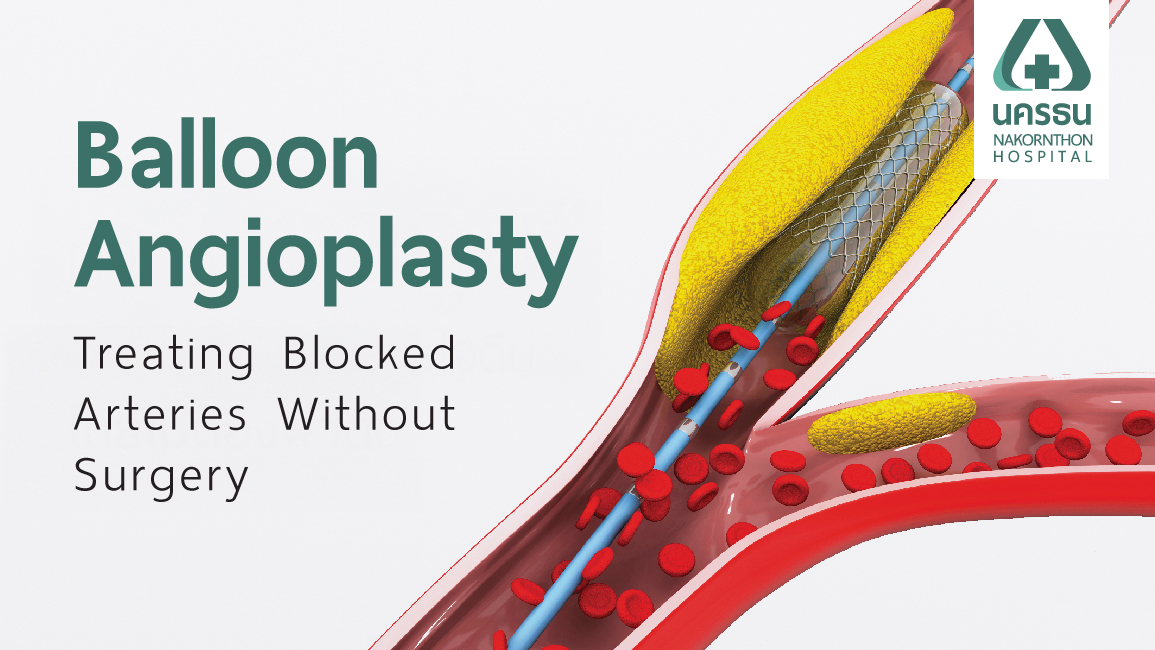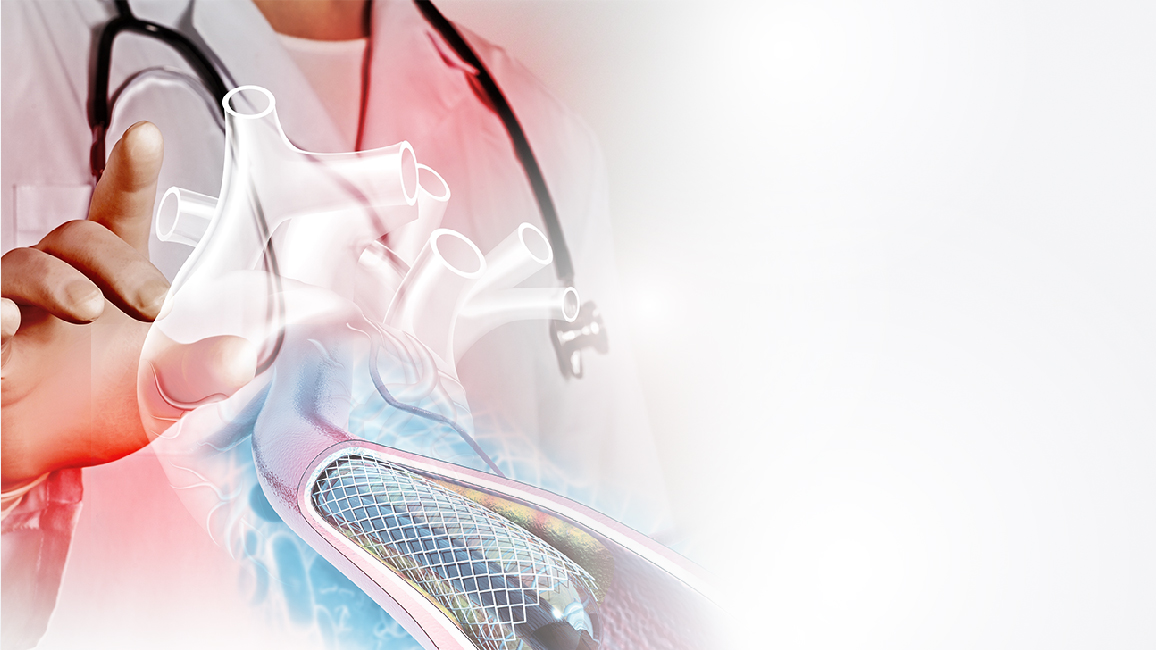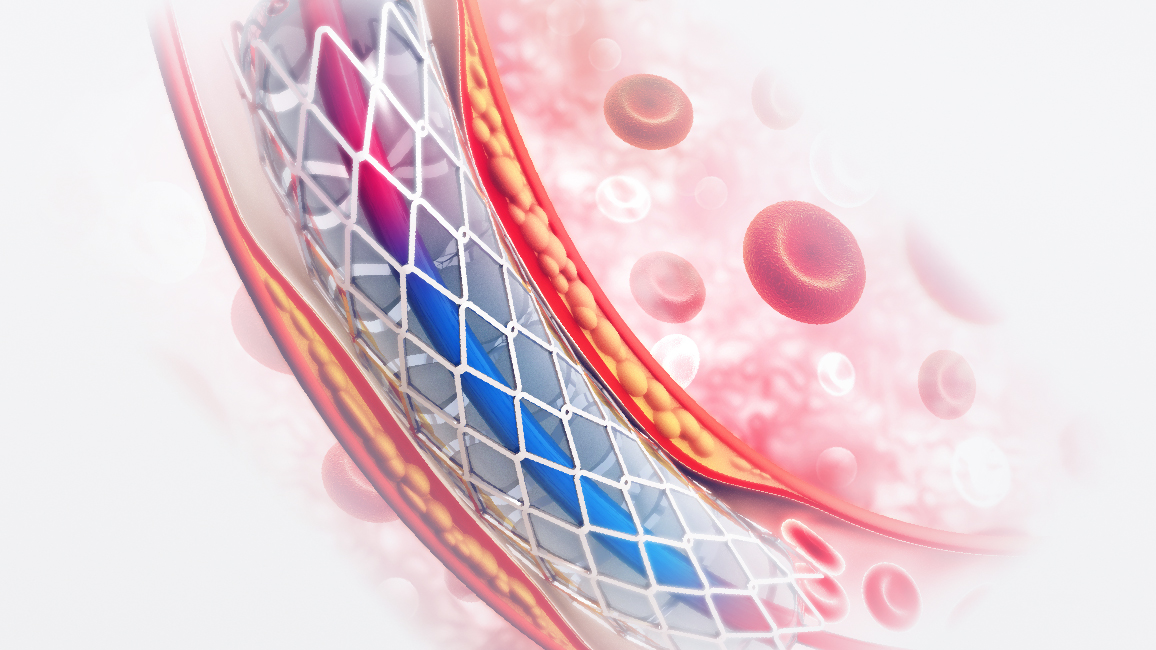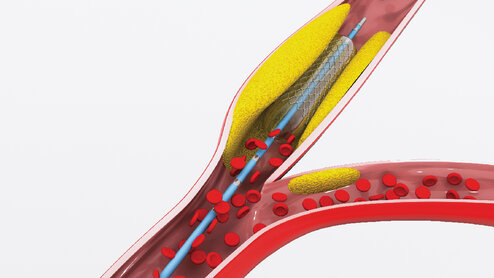Balloon Angioplasty for Heart & Artery Disease Treatment
Center : Heart Center
Article by : Dr. Sirapat Poonvutikul

Balloon angioplasty, or cardiac balloon procedure, combined with stent placement is a specialized treatment for coronary artery disease. This condition occurs when the arteries supplying blood to the heart muscle become blocked or narrowed, leading to chest pain, shortness of breath, and potentially acute heart failure.
The balloon angioplasty procedure is a minimally invasive treatment that reopens blocked vessels, allowing blood to flow more freely to the heart muscle. Patients experience quick recovery times while effectively relieving symptoms and reducing the risk of serious complications.
Table of Contents
- What is Balloon Angioplasty?
- Why is Balloon Angioplasty needed?
- Preparation of Balloon Angioplasty
- Procedure of Balloon Angioplasty
- How to take care of yourself after Balloon Angioplasty?
- Complications of Balloon Angioplasty
- Balloon Angioplasty treatment for CAD
- Free Online Consultation with a Specialist
What is Balloon Angioplasty?


Balloon angioplasty, or Percutaneous Coronary Intervention (PCI), is a minimally invasive procedure used to treat coronary artery disease without the need for open-heart surgery. Balloon angioplasty widens narrowed or blocked coronary arteries by inserting a thin, flexible catheter with a small balloon at its tip through blood vessels in the groin or wrist.
When the catheter reaches the narrowed section of the artery, the balloon is inflated, compressing fatty deposits and calcium buildup against the artery walls. This process widens the blood vessel, allowing blood to flow more freely to the heart muscle once again.
In most cases, physicians will also place a stent—a small mesh tube—to reinforce the newly widened artery. The stent remains permanently in place, providing structural support and helping to prevent the artery from narrowing again. Some stents are coated with medication (drug-eluting stents) that is gradually released to further reduce the risk of re-narrowing over time.
Why is Balloon Angioplasty needed?
Balloon angioplasty works by pushing fatty blockages against the arterial walls, creating a wider passage for blood flow through previously narrowed sections. This significantly reduces the risk of acute myocardial infarction (heart attack) caused by coronary artery blockages. The procedure offers fewer complications compared to bypass surgery since it doesn't require major surgical incisions or general anesthesia.
Recovery after balloon angioplasty is remarkably brief. Most patients need only 1-2 days of rest before returning to normal life without the worry of cardiac ischemia symptoms. Another advantage is that the procedure can be repeated multiple times if arteries narrow again in the future.
However, for patients with multiple blocked vessels or with complicating conditions such as arrhythmias or heart valve regurgitation, physicians may recommend heart bypass surgery as a more appropriate treatment option.
Preparation of Balloon Angioplasty
Pre-Procedure Preparation:
- Fast from food and liquids for 6-8 hours before the procedure
- Inform your doctor about any allergies to medications or seafood
- Provide a complete list of your medical conditions
- Bring all your regular medications, especially:
- Diabetes medications
- Blood thinners (anticoagulants)
- Notify your doctor about any:
- Cold medications
- Antihistamines
- Weight loss supplements
- Psychiatric medications (some may cause heart rhythm disturbances)
- Try to remain calm as stress and anxiety can temporarily affect heart rhythm
Procedure of Balloon Angioplasty


- Your doctor will administer local anesthesia before inserting a catheter into an artery in your wrist or groin
- A soft plastic tube (approximately 2mm in diameter) will be inserted into the artery to create a pathway for the cardiac catheter into your main coronary arteries
- Contrast dye will be injected through this small tube to visualize the inside of your blood vessels and identify narrowed areas. Upon locating blockages, your doctor will insert the cardiac catheter to expand the narrowed vessel using a balloon and supportive stent
- The entire balloon angioplasty procedure typically takes about 45-60 minutes. After completion, the tube will be removed from your wrist or groin, and pressure will be applied to stop bleeding. Depending on your case and your doctor's assessment, medication or special devices may be used to accelerate clotting

How to take care of yourself after Balloon Angioplasty?
- Mandatory bed rest following the Balloon angioplasty procedure:
- If accessed through the groin: Lie flat for 6-10 hours without bending the leg; you cannot sit up or walk immediately
- If accessed through the wrist: Shorter recovery of 4-8 hours; you may stand or sit immediately, though you'll wear a wristband (TR band) temporarily
- Drink approximately 1 liter of water (if not medically restricted) to help flush out the contrast dye
- Keep the heart balloon surgery procedure site dry for about 3 days; if it gets wet, clean with betadine
- Report any concerns to your nurse immediately, especially these symptoms:
- Bleeding
- Pain, swelling, or redness
- Unusual warmth or coolness
- Paleness or lump formation
- If you experience pain at the Balloon Angioplasty procedure site, you may take pain medication as prescribed or consult your doctor
- Take all medications as directed—never stop them without medical advice and seek immediate medical attention if you experience chest pain
- Avoid strenuous exercise or heavy physical activity for the first 2 weeks after balloon pulmonary angioplasty
- Do not lift objects heavier than 5 kilograms (11 pounds) for approximately 1 month
- When coughing or straining, apply pressure to the wound site for about 7 weeks (if the procedure was performed via the groin)
Complications of Balloon Angioplasty
While balloon angioplasty has a low risk of side effects (only about 1%), there are still some potential risks associated with the procedure, including:
- Infection, bleeding, or pain at the catheter insertion site
- Blood clot formation in coronary arteries, which can lead to myocardial infarction
- Allergic reaction to contrast media, potentially causing shock
- Cardiac arrhythmias
- In some cases, perforation of coronary vessels or heart muscle during balloon catheter insertion
- Stroke due to blood clots (incidence less than 0.2%)
- Death (incidence less than 0.5%)
Balloon Angioplasty treatment for CAD
Performing balloon angioplasty under the supervision of specialized physicians, along with following medical advice, can significantly reduce these risks. At Nakornthon Hospital Heart Center, treatment efficacy is enhanced through the use of Biplane Digital Subtraction Angiography (Biplane DSA) technology for diagnosing and treating coronary artery disease. This advanced equipment produces exceptionally clear images, allowing physicians to clearly visualize even very small catheter vessels, making it possible to treat complex and tortuous coronary arteries effectively.
Nakornthon Hospital is particularly well-equipped to serve international patients residing in Thailand who seek quick recovery treatments with minimal hospital stays. The hospital features comprehensive medical equipment and specialized care designed specifically for expatriates and foreign residents. The modern cardiac facilities allow for fast-recovery procedures in many cases, meaning patients can often return home quickly without extended hospital stays.
With English-speaking staff, state-of-the-art diagnostic equipment, and internationally trained cardiologists, Nakornthon Hospital provides efficient treatment pathways specifically designed for the international community.
For more information, please contact:
- - Website : https://en.nakornthon.com
- - Facebook : Nakornthon Hospital - International Patient
- - Line : @nakornthoninter
- - Tel: 02-450-9999 (Available 24 hours)
Free Online Consultation
Article of Heart Center




.jpg)

